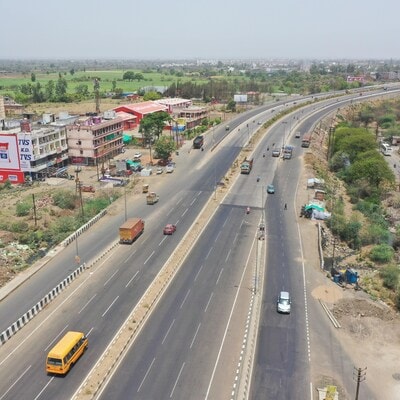The Ministry of Road Transport and Highways on Tuesday (September 10) revised the National Highways Fee (Determination of Rates and Collection) Rules, 2008, incorporating electronic toll collection through satellite-based systems.
As per the recent notification, these amendments introduce the use of the Global Navigation Satellite System (GNSS), including the United States’ Global Positioning System (GPS) with On-Board Units (OBUs), as a method for toll collection. This is in addition to existing systems like FASTag and Automatic Number Plate Recognition (ANPR) technology.
With these updates, vehicles equipped with GNSS OBUs will be able to automatically pay tolls based on the distance they travel. Rule 6 of the 2008 regulations has been altered to create exclusive lanes at toll plazas for vehicles with GNSS devices, eliminating the need for them to stop for manual toll payment.
The revised rules, which were published in the Official Gazette, are part of the government’s efforts to modernise toll collection on national highways through advanced technology.
The Ministry also clarified that vehicles not registered in India or those without functioning GNSS devices will continue to be charged standard toll rates. Additionally, a zero-toll corridor of up to 20 km will be introduced for vehicles using the GNSS system, beyond which tolls will be charged based on the distance travelled.
What is GPS-based toll collection?
For now, tolls are paid manually at toll booths, which often lead to traffic congestion, even with the use of FASTag. The GPS-based toll system leverages satellites and in-car tracking systems to calculate tolls based on the distance travelled.
This system utilises satellite-based tracking and GPS technology to charge tolls according to the distance a vehicle covers, thus eliminating the need for physical toll plazas and reducing wait times for drivers.
Vehicles equipped with On-Board Units (OBUs) or tracking devices will be charged based on the distance covered on highways. Digital image processing records highway coordinates, while CCTV cameras installed on gantries ensure compliance by verifying vehicle positions, enabling seamless toll collection.
How does it differ from FASTag?
Unlike FASTag, the satellite-based toll system relies on GNSS technology, providing precise location tracking. It uses GPS and India’s GPS Aided GEO Augmented Navigation (GAGAN) system for more accurate distance-based tolling.
How will the satellite-based toll collection work?
Vehicles will be fitted with OBUs that act as tracking devices for toll collection. The OBU tracks a vehicle’s coordinates on highways, which are shared with satellites to calculate the distance travelled.
Meanwhile, GPS and GNSS will ensure accurate distance measurement for toll calculations. The highway cameras can then cross-check vehicle locations with recorded images for accuracy.
The system will initially be rolled out on key highways and expressways.
The OBUs will be available through government portals, similar to FASTags. They will need to be externally installed on vehicles, though manufacturers may begin offering vehicles with pre-installed OBUs.
Once in place, toll charges will be automatically deducted from the linked bank account based on the distance driven. Pilot projects on selected national highway stretches will test the efficacy of the GNSS-based toll system, which will initially operate alongside FASTag.
How will it impact revenue from tolls?
Currently, the National Highway Authority of India (NHAI) collects around Rs 40,000 crore in toll revenue annually. This is expected to rise to Rs 1.4 trillion over the next two to three years as the new toll collection system is fully implemented.
NHAI aims to integrate this system with the existing FASTag setup, using a hybrid model where both RFID-based and GNSS-based toll systems will operate concurrently. Dedicated GNSS lanes will be available at toll plazas to allow vehicles equipped with the new system to pass through without stopping. An Expression of Interest (EOI) had earlier been issued to identify companies capable of delivering the Toll Charger Software necessary for implementing GNSS-based toll collection in India.
The roll-out of GNSS-based toll collection is expected to enhance vehicle movement on national highways by offering barrier-free and distance-based tolling.
What can be the possible challenges?
The transition to a GPS-based toll system in India will face challenges, particularly due to the country’s vast road network and variety of vehicles. India has about 6.67 million km of road network, which is the second largest in the world.
Meanwhile, the total toll length in the country has risen from 25,996 km in FY19 to 45,428 km as of November-end of FY24. Toll length stood at 29,666 km in 2019-20, 34,071 km in 2020-21, 38,315 km in 2021-22 and 42,595 km in 2022-23.
While India has shown the capability to embrace digital technologies for cost efficiency, significant infrastructure upgrades will be necessary. The current FASTag infrastructure may need replacement, potentially leading to higher toll costs for users.
First Published: Sep 10 2024 | 2:01 PM IST
